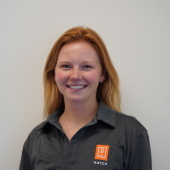
Insights into existing supply chains and new markets for a productive and scalable seaweed industry
Karlotta Rieve, Project Manager, Hatch Blue, Norway

Insights into existing supply chains and new markets for a productive and scalable seaweed industry
Karlotta Rieve, Project Manager, Hatch Blue, Norway
About the speaker:
Karlotta Rieve works as a Project Manager for the Innovation Services Business of Hatch, a global accelerator, investment and consultancy company for sustainable aquaculture. With the main focus of her work around seaweed, she has most recently led a study to assess the current state of seaweed farming in Asia. For this project she travelled to the main seaweed producing regions in Asia, to visit and collect data from 100+ farmers, processors, traders, researchers and innovative companies across 5 countries. With a Master in Innovation and Entrepreneurship from Denmark, she has been working in the food tech ecosystem before strategically making her way into aquaculture. Prior to joining Hatch, Karlotta gained hands on experience with different aquaculture species, including seaweed cultivation on the Faroe Islands with Ocean Rainforest.
Presentation:
As part of our global seaweed report, Hatch has assessed market opportunities of novel products and applications from seaweed biomass. This work identifies new short, medium and long - term market entry points for seaweed application across a number of industrial sectors, such as Animal feed, Bioplastics, Biostimulants, Fabrics, Construction, Biogas, Nutraceuticals and Pharmaceuticals. Matched with our in-field research across the major seaweed producing regions in Asia to analyze the current state of seaweed supply, we outline current technology constraints and highlight innovation opportunities and investment needs.
The Seagriculture APAC will provide the first stage to share our preliminary findings of this work with the global seaweed community as well as launch our new website that provides a practical guide to seaweed farming based on our farm surveys and visits for the five main commercial species.
Interview:
1) When was the first time you got involved with seaweeds and why?In summer 2021 was the first time I really got my hands 'dirty’ with seaweed - quite literally. Right in the peak harvest season, I supported the day-to-day activities at the trailblazing offshore seaweed business Ocean Rainforest on the Faroe Islands in the North Atlantic.For Kelp and Wakame, we will hopefully see increased atomisation along the entire primary production processes, so the (today physically demanding) work will become more attractive especially to the younger generation again. The dedicated efforts to develop robust and high yielding strains will have paid off and despite rising sea temperature high quality seaweeds are produced.
3) What will you be talking about at Seagriculture Asia-Pacific 2023?
The Seagriculture APAC will provide the first stage to share our preliminary findings of the work with the global seaweed community as well as launch our new website that provides a practical guide to share our preliminary findings of this work with the global seaweed community as well as launch our new website that provides a practical guide to seaweed farming based on our farm surveys and visits for the five main commercial species. As part of our global seaweed report, Hatch has assessed market opportunities of novel products and applications from seaweed biomass. This work identifies new short, medium and long - term market entry points for seaweed application across a number of industrial sectors, such as Animal feed, Bioplastics, Biostimulants, Fabrics, Construction, Biogas, Nutraceuticals and Pharmaceuticals. Matched with our in-field research across the major seaweed producing regions in Asia to analyze the current state of seaweed supply, we outline current technology constraints and highlight innovation opportunities and investment needs.